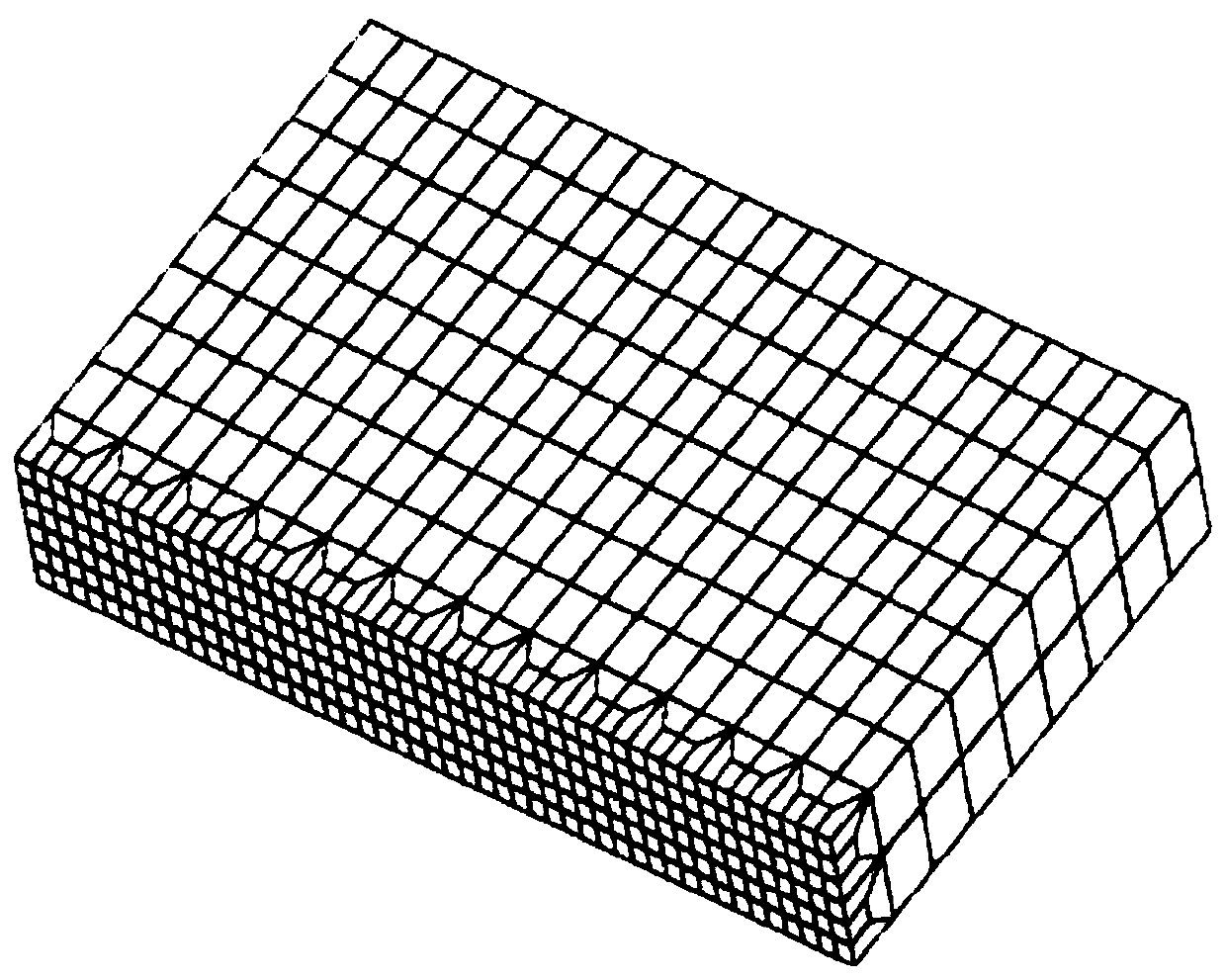Method for Establishing Mesh Model of Welded Hybrid Bidirectional Transition Elements
A technology of cell grid and establishment method, applied in the direction of instrument, design optimization/simulation, calculation, etc., can solve the problems of cell model difficulty, insufficient cell flexibility, large cell length and width, etc., so as to improve the density transition efficiency and reduce the calculation Time cost, effect of reducing the number of units
- Summary
- Abstract
- Description
- Claims
- Application Information
AI Technical Summary
Problems solved by technology
Method used
Image
Examples
Embodiment 1
[0030] A method for establishing a welded mixed bidirectional transition cell mesh model, comprising the following steps:
[0031] Step 1. Establish a three-dimensional welding structure geometric model and divide it into weld zone, near weld zone, transition zone and far weld zone;
[0032] Step 2, further dividing the geometric model into minimum geometric model components;
[0033] Step 3, further cutting the transition zone part of the minimum geometric model component into cuboid finite element cells;
[0034] Step 4, dividing the minimum geometric model components from the far welding area to the welding seam area in turn for solid finite element mesh division;
[0035] Step 5, spatially copy the finite element mesh model of the smallest geometric model component, and completely coincide with the three-dimensional geometric model;
[0036] Step 6. Merge the entire finite element model with duplicate nodes, delete the 3D geometric model, and complete the modeling, such ...
Embodiment 2
[0046] In the case of high mesh density at the weld, multiple bidirectional transition units can also be used for density transition, such as figure 2 shown.
PUM
 Login to View More
Login to View More Abstract
Description
Claims
Application Information
 Login to View More
Login to View More - R&D
- Intellectual Property
- Life Sciences
- Materials
- Tech Scout
- Unparalleled Data Quality
- Higher Quality Content
- 60% Fewer Hallucinations
Browse by: Latest US Patents, China's latest patents, Technical Efficacy Thesaurus, Application Domain, Technology Topic, Popular Technical Reports.
© 2025 PatSnap. All rights reserved.Legal|Privacy policy|Modern Slavery Act Transparency Statement|Sitemap|About US| Contact US: help@patsnap.com


